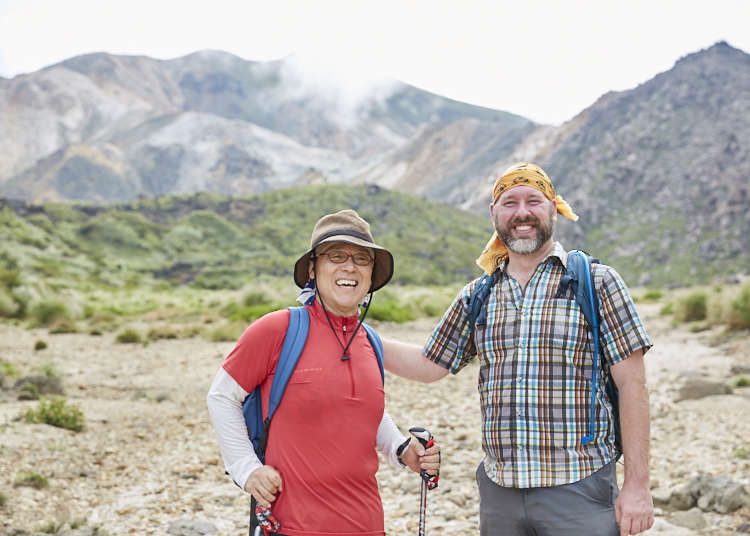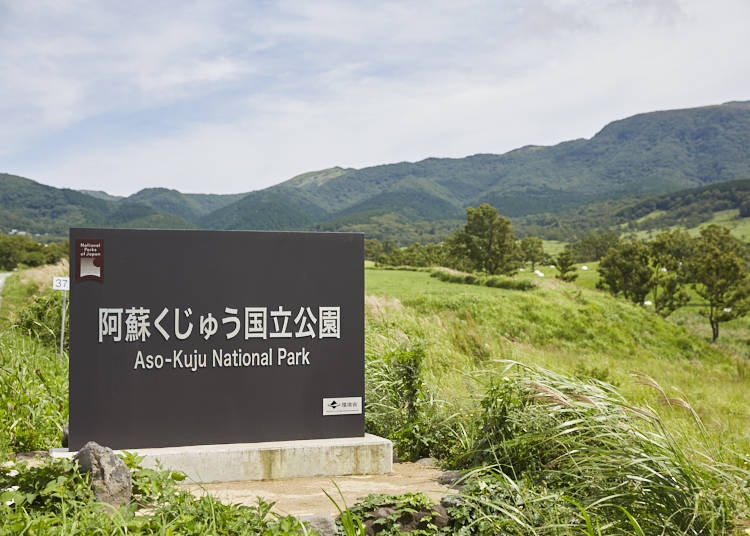
Today, we join Mr. Tetsu Morita, a Japanese tourist spot hunter for Michelin Green Guide Japan, in Kyushu’s Aso-Kuju National Park. Here, beautiful grasslands abound and volcanoes such as Mount Aso tower above some of the world’s largest calderas.
The locations here are also easily accessible to and from the venues of the Rugby World Cup, including the Oita Sports Stadium Showa Denko Dome and the Kumamoto Egao Kenko Stadium. Such convenience is sure to make for a fun and enjoyable trip.
Features of Aso-Kuju National Park

Our trip begins from the Chojabaru Visitor Center, one of the entry points to the Kuju Mountain Range of Aso-Kuju National Park. It is located about 2 hours away by car from Fukuoka Airport, the main airport used by tourists visiting Kyushu, Japan.

Morita: “Today, we will start our trek from this Chojabaru trailhead. As a volcanic mountain, this course offers many unique natural landscapes that you can see in a single day, such as wetlands, grasslands, and climbing rocks. There are even wasteland areas that make you feel like you’re on Mars, with steam rising up from the ground. It’s sure to be a satisfying journey even for those may be accustomed to hiking.”

Timothy: “This is a national park, right?”
Morita: “Yes. This national park is managed by the Ministry of the Environment to protect Japan's beautiful, natural landscapes. Aso-Kuju National Park spans Kumamoto and Oita Prefecture, with Mount Aso and Mount Kuju at the center, and covers an area of over 70,000 hectares.”
Timothy: “So this entire area is a designated national park. What are some of its features?”
Morita: “Undeniably, it’s the volcanic nature of the mountains that you can not just see, but feel. The caldera formed from the eruption of Mount Aso is said to be amongst the largest in the world, with a length of 18km from east to west and 25km from north to south. Remnants from the eruption, such as piled-up volcanic ash, caused part of the mountain to collapse, resulting in the formation of a gigantic crater in the center of the volcanic cones. That is what is now the caldera. It has a unique terrain surrounded by the outer rim and spectacular sight of vast expanses of grass and smoke rising from the central crater.”
Timothy: “I heard that cattle are also pastured around this caldera.”
Morita: “Yes, this is where the brown cows that Akaushi Beef comes from are raised. The Aso Plateau is a grassland where Akaushi cattle graze for food, which is also a factor behind the maintenance of Aso’s …

